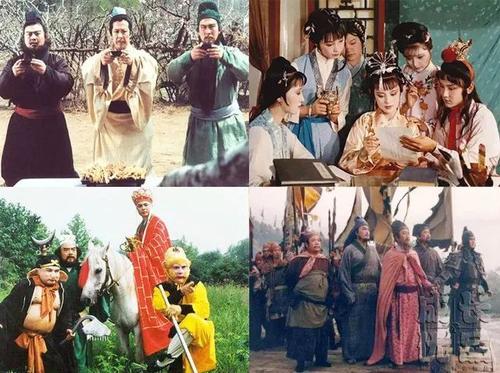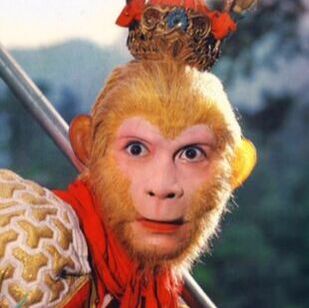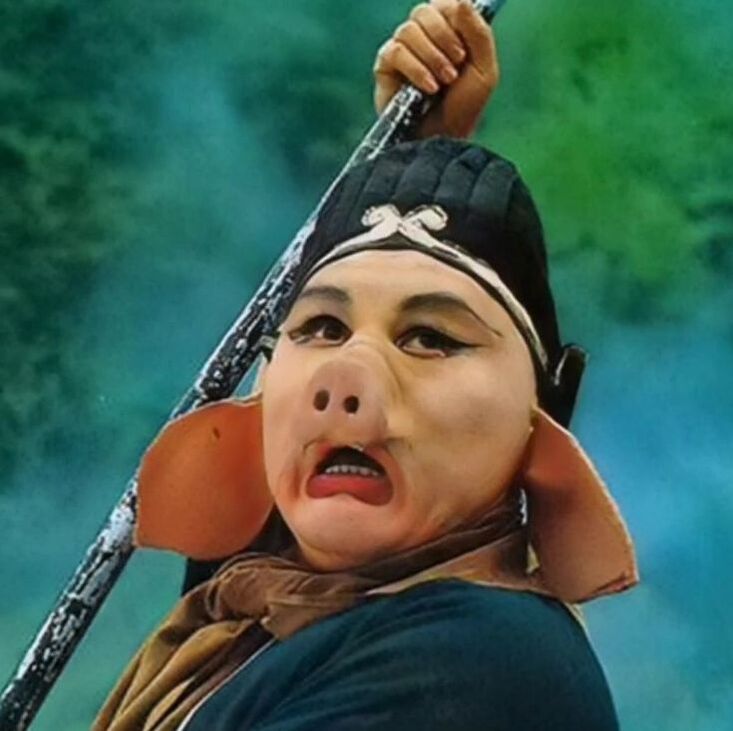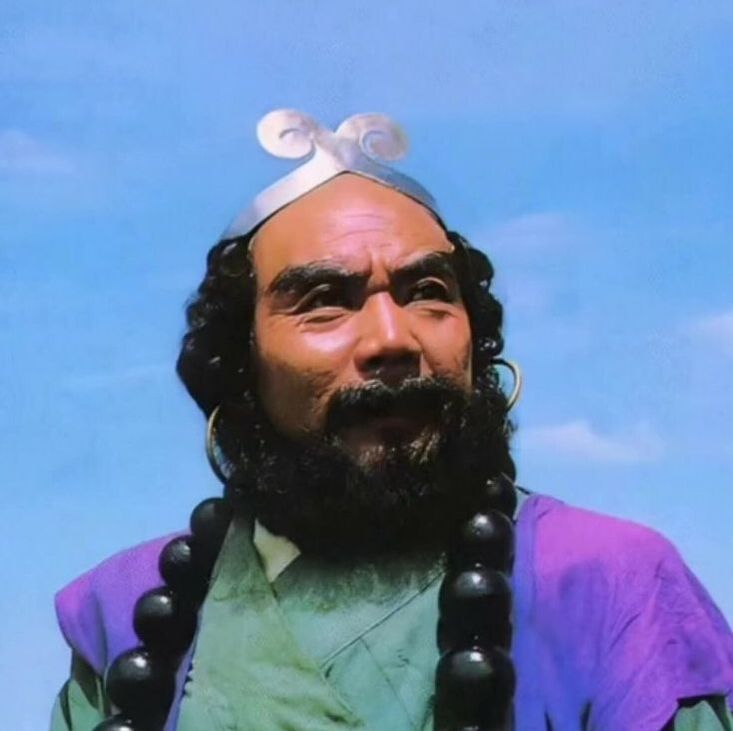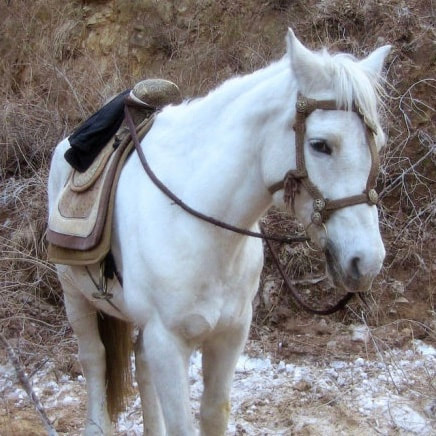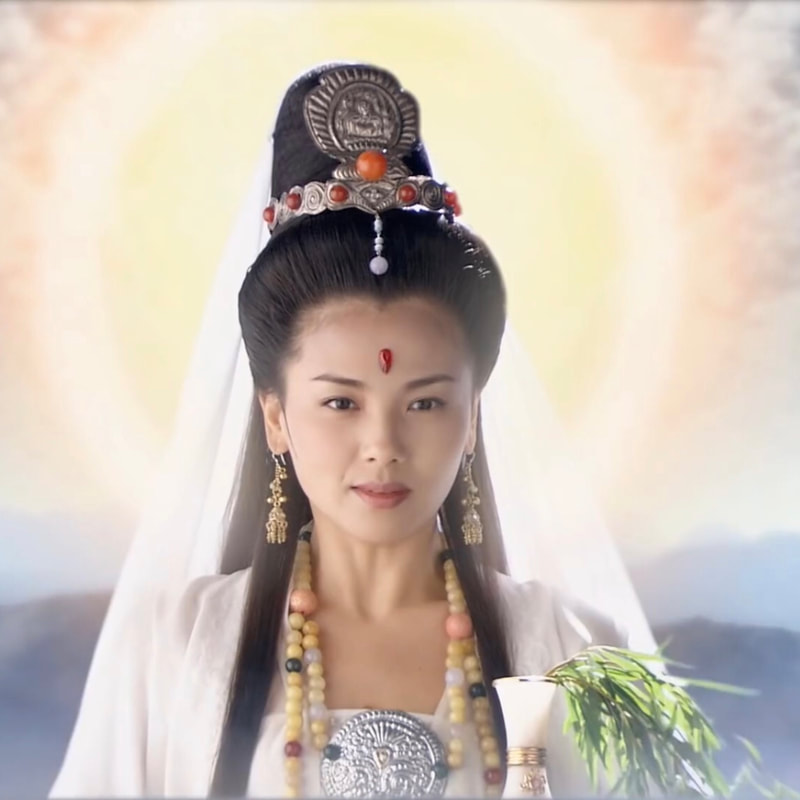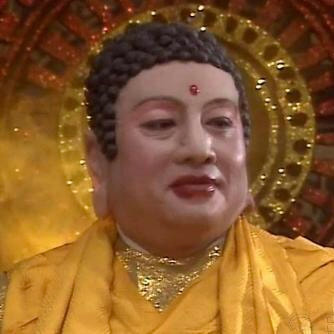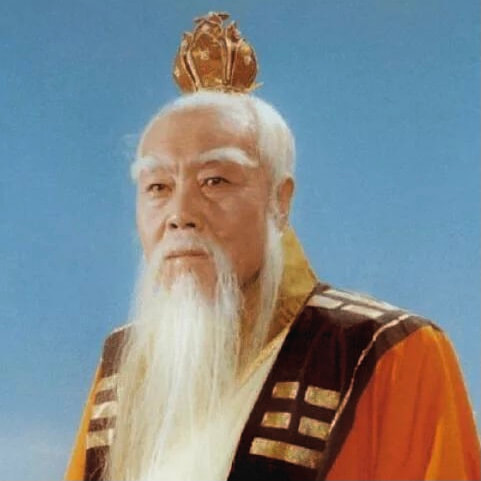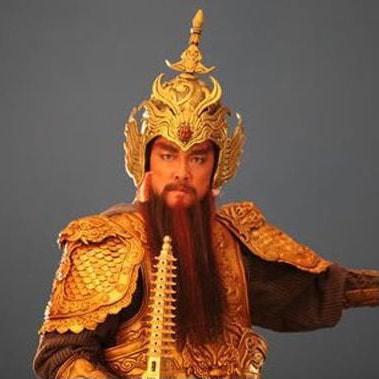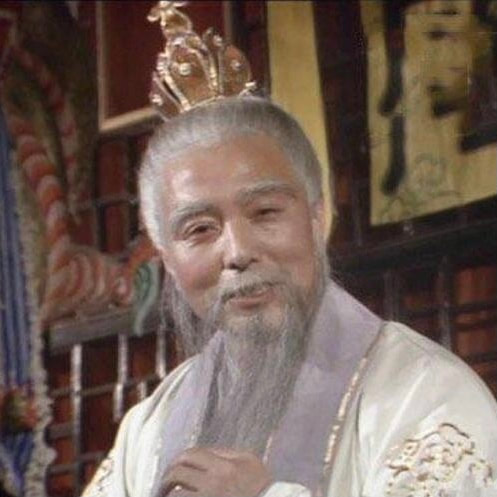|
|
Journey to the West Library
1. Historical Background
|
Journey to the West is one of the Four Great Classic Novels (sida mingzhu, 四大名著) [1] of China and has been recognised as a masterpiece since its publication in 1592, during China's Ming dynasty (1368-1644, 明朝). The novel itself is loosely based on the historical pilgrimage of the monk Xuanzang (玄奘) in the 7th century, 627-645 to be exact, on a similar quest to seek Buddhist sutras in India.
|
|
Stories of the iconic Monkey King and his companionship with Xuanzang have been a part of Chinese folklore, going all the way back to even the Song dynasty (960-1279, 宋朝). The oldest forms of primary evidence for this are from cave paintings in China's Gansu province (甘肃), depicting a "Monkey Pilgrim (hou xingzhe, 猴行者)" with a monk master, dating back to the 11th century [src. 4-6].
Stories of the Monkey Pilgrim were passed on through word of mouth. These folk tales were already a part of Chinese folk culture before it was converted and popularised into the 100-chapter novel that we know today, introducing to us some of the most iconic figures in Chinese culture. These, of course, include our four protagonists, with the story lead by the one and only Monkey King! |
|
The story of Journey to the West became popular to all, even in the Western world, with many translations throughout the past decades in not just English, but a diversity of languages [2]. References of this famous story have appeared in many novel, television, movie, comic and game adaptations, with most of these simply having the iconic Monkey King as a basis. Journey to the West is no doubt one of the greatest, if not the greatest, novels of all time.
2. Authorship
 [Src. 7] A painted portrait of Wu Cheng'en [artist & date unknown]
[Src. 7] A painted portrait of Wu Cheng'en [artist & date unknown]
Since fiction was not a prestigious genre in classic Chinese literature, the authorship of fiction novels were not carefully attributed and soon became unknowable. The author of Journey to the West is still in some sense, uncertain, especially with the fact that the novel was first published anonymously. The novel has been popularly attributed to Wu Cheng'en (c. 1500-1582, 吴承恩), ever since a local newsletter article in 1625 from Wu's hometown claims so.
It is interesting to note that the novel was published in 1592, while Wu Cheng'en's death date is marked in 1582. That's 10 whole years before the novel was published by the Shidetang (世德堂) publishing house. The novel was indeed published anonymously at first, most likely due to the fact that there were set rules during that time, regarding what could or could not be written as literature. During and before Wu's time, in the Ming Dynasty, there has always been a trend in literary writing. Literature was supposed to written in "classical Chinese (guwen, 古文)", a form of archaic Chinese popularised during the Spring and Autumn period (771-476 BC, chunqiu, 春秋). Classical Chinese has also become to be known as "literary Chinese", and is traditionally used in pieces of formal literature. The opposite of literary Chinese is "vernacular Chinese (baihua wen, 白话文)", which is just the written form of informal spoken Mandarin Chinese. Wu Cheng'en allegedly went against the classical Chinese trend of the time, by writing his Journey to the West in vernacular Chinese, and because this was against the cultural standards of literature, the novel was published anonymously. For nearly 300 years, Journey to the West had no credited author.
It is interesting to note that the novel was published in 1592, while Wu Cheng'en's death date is marked in 1582. That's 10 whole years before the novel was published by the Shidetang (世德堂) publishing house. The novel was indeed published anonymously at first, most likely due to the fact that there were set rules during that time, regarding what could or could not be written as literature. During and before Wu's time, in the Ming Dynasty, there has always been a trend in literary writing. Literature was supposed to written in "classical Chinese (guwen, 古文)", a form of archaic Chinese popularised during the Spring and Autumn period (771-476 BC, chunqiu, 春秋). Classical Chinese has also become to be known as "literary Chinese", and is traditionally used in pieces of formal literature. The opposite of literary Chinese is "vernacular Chinese (baihua wen, 白话文)", which is just the written form of informal spoken Mandarin Chinese. Wu Cheng'en allegedly went against the classical Chinese trend of the time, by writing his Journey to the West in vernacular Chinese, and because this was against the cultural standards of literature, the novel was published anonymously. For nearly 300 years, Journey to the West had no credited author.
|
Regardless of authorship, Wu has been popularly recognised as the author of Journey to the West, and his name, Wu Cheng'en, has become inextricably linked with the novel.
|
3. Main Characters
Below is a short list of the major characters that appear in Journey to the West. They will not require further introduction when mentioned in articles. Note that since the novel is highly based on theology and folklore, these main characters are all from either the Buddhist or Daoist pantheon.
4. Novel Outline - The Four Parts
When talking about Journey to the West, the 100-chapter novel can be divided into 4 major parts, each telling a different section of the novel. These 4 parts do not refer to the four volumes that Anthony C. Yu or W.J.F. Jenner have published their translations of Journey to the West in, nor do they refer to each set of 25 chapters of the novel's 100.
A simple full summary of the whole novel can be found on this blog here:
Novel Summary
Novel Summary
3.1. Part 1: Monkey's StoryChapters:
1 - 7 (7 chapters)
|
|
|
|
4.2. Part 2: The Story of the Tang'sChapters:
8 - 12 (5 chapters)
|
4.3. The JourneyChapters:
13 - 97 (85 chapters)
|
|
|
|
4.4. Journey's EndChapters:
98 - 100 (3 chapters)
|
- Notes
[1] Four Great Classic Novels (四大名著)
These are the four greatest works of Chinese literature, considered masterpieces by people for generations. In order of publication date, these four novels are: Water Margin (shuihu zhuan, 水浒传), Romance of the Three Kingdoms (sanguo yanyi. 三国演义), Journey to the West and Dream of the Red Chamber (honglou meng, 红楼梦).
[2]
A range of foreign language translations of Journey to the West can be found in PDF, archived by Jim R. McClanahan of the Journey to the West Research blog, here:
PDFs of Journey to the West Translations
[3] Chen Xuanzang (陈玄奘)
For more info on why Tripitaka's name may seem unconventional, see:
A Misconception: "Tang Xuanzang" is Tripitaka's Wrong Name
[4] Sun Wukong (孙悟空)
Literal meaning (Chinese): macaque awakened to vacuity/emptiness.
[5] Bajie (八戒)
Also translated as: eight proscriptions, Eight Rules (Yu, 2012).
Literal meaning: eight precepts.
The eight precepts (i.e. forbidden acts) of Buddhism are: killing, stealing, sexual misconduct, lying, drinking alcohol, using cosmetics (e.g. makeup), using personal comforts (e.g. a fine bed) and eating outside of regulated hours.
[6] Tripitaka [...] Monkey [...] Pigsy [...] Sandy
These English names were originally created by Arthur Waley. Since they are so well known to English readers, I have chosen to adopt them here, throughout this website.
[7] Bodhisattva (बोधिसत्त्व, 菩萨)
Literal meaning (Sanskrit): one whose goal is awakening.
A Bodhisattva is a status in the Buddhist pantheon. These deities are those who have successfully reached enlightenment, but does not attain full Buddhahood due to the delay of them remaining in compassion for the sufferings in the world.
[8] Guanyin (观音)
Literal meaning (Chinese): one who observes the voices (of the suffering).
Also known as: Goddess of Mercy.
Bodhisattva Guanyin is the Chinese counterpart of the Sanskrit deity Avalokiteshvara. She is usually depicted as a female in Chinese culture.
[9] Tathagata (තථාගත, 如来)
Literal meaning (Pali): one who has gone beyond.
Tathagata is actually a rank rather than a name for a Buddha. Tathagata is the highest status for a Buddha and refers to one who has completely perfected all principles of Buddhism. It can also be used as a pronoun when a Tathagata Buddha refers to themselves. In the context of Journey to the West, Tathagata just refers to the Buddha Guatama, or Sakyamuni.
[10] Buddha (बुद्ध, 佛)
Literal meaning (Sanskrit): one who has awakened.
A Buddha is the highest rank for an individual of the Buddhist pantheon. It is a title given to those who have found enlightenment and reached nirvana.
[11] Supreme Exalted (太上)
Supreme Exalted is an honorific title used to address high ranking members of the Daoist pantheon.
[12] Laozi (老子)
Also translated as: Laotzu.
Laozi is the venerable name of Li Er (c. 571-442 BC?, 李耳), the founder of the religion Daoism.
[13] Gold Star (金星)
Also translated as: metal star.
In Chinese, the five planets orbiting closest to the Sun (excluding Earth) are named after the five elements (wuxing, 五行) of water, metal, fire, wood and earth respectively for the planets Mercury, Venus, Mars, Jupiter and Saturn. Though "Metal Star" would be the most accurate translation here for Venus' name, I have chosen to use the more popularly known "Gold Star" as a direct translation, rather than its Daoist alchemic connection.
[14] Devaraja (देवराज, 天王)
Literal meaning (Sanskrit): god king.
Also known as: Heavenly King.
These are the four greatest works of Chinese literature, considered masterpieces by people for generations. In order of publication date, these four novels are: Water Margin (shuihu zhuan, 水浒传), Romance of the Three Kingdoms (sanguo yanyi. 三国演义), Journey to the West and Dream of the Red Chamber (honglou meng, 红楼梦).
[2]
A range of foreign language translations of Journey to the West can be found in PDF, archived by Jim R. McClanahan of the Journey to the West Research blog, here:
PDFs of Journey to the West Translations
[3] Chen Xuanzang (陈玄奘)
For more info on why Tripitaka's name may seem unconventional, see:
A Misconception: "Tang Xuanzang" is Tripitaka's Wrong Name
[4] Sun Wukong (孙悟空)
Literal meaning (Chinese): macaque awakened to vacuity/emptiness.
[5] Bajie (八戒)
Also translated as: eight proscriptions, Eight Rules (Yu, 2012).
Literal meaning: eight precepts.
The eight precepts (i.e. forbidden acts) of Buddhism are: killing, stealing, sexual misconduct, lying, drinking alcohol, using cosmetics (e.g. makeup), using personal comforts (e.g. a fine bed) and eating outside of regulated hours.
[6] Tripitaka [...] Monkey [...] Pigsy [...] Sandy
These English names were originally created by Arthur Waley. Since they are so well known to English readers, I have chosen to adopt them here, throughout this website.
[7] Bodhisattva (बोधिसत्त्व, 菩萨)
Literal meaning (Sanskrit): one whose goal is awakening.
A Bodhisattva is a status in the Buddhist pantheon. These deities are those who have successfully reached enlightenment, but does not attain full Buddhahood due to the delay of them remaining in compassion for the sufferings in the world.
[8] Guanyin (观音)
Literal meaning (Chinese): one who observes the voices (of the suffering).
Also known as: Goddess of Mercy.
Bodhisattva Guanyin is the Chinese counterpart of the Sanskrit deity Avalokiteshvara. She is usually depicted as a female in Chinese culture.
[9] Tathagata (තථාගත, 如来)
Literal meaning (Pali): one who has gone beyond.
Tathagata is actually a rank rather than a name for a Buddha. Tathagata is the highest status for a Buddha and refers to one who has completely perfected all principles of Buddhism. It can also be used as a pronoun when a Tathagata Buddha refers to themselves. In the context of Journey to the West, Tathagata just refers to the Buddha Guatama, or Sakyamuni.
[10] Buddha (बुद्ध, 佛)
Literal meaning (Sanskrit): one who has awakened.
A Buddha is the highest rank for an individual of the Buddhist pantheon. It is a title given to those who have found enlightenment and reached nirvana.
[11] Supreme Exalted (太上)
Supreme Exalted is an honorific title used to address high ranking members of the Daoist pantheon.
[12] Laozi (老子)
Also translated as: Laotzu.
Laozi is the venerable name of Li Er (c. 571-442 BC?, 李耳), the founder of the religion Daoism.
[13] Gold Star (金星)
Also translated as: metal star.
In Chinese, the five planets orbiting closest to the Sun (excluding Earth) are named after the five elements (wuxing, 五行) of water, metal, fire, wood and earth respectively for the planets Mercury, Venus, Mars, Jupiter and Saturn. Though "Metal Star" would be the most accurate translation here for Venus' name, I have chosen to use the more popularly known "Gold Star" as a direct translation, rather than its Daoist alchemic connection.
[14] Devaraja (देवराज, 天王)
Literal meaning (Sanskrit): god king.
Also known as: Heavenly King.



